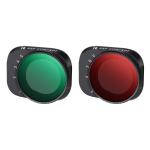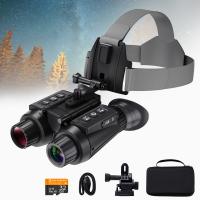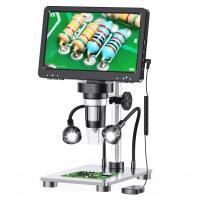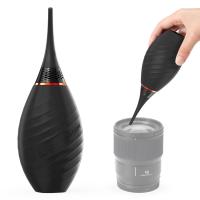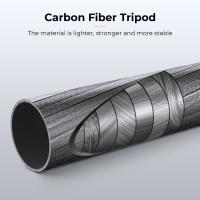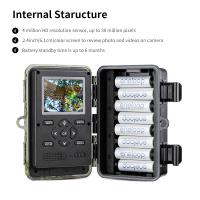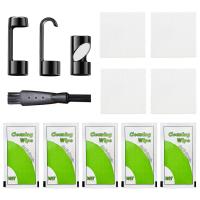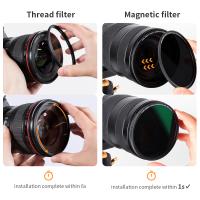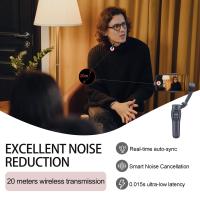Reviews
Easy to put on and remove, gimbal works, good box included
My Mini3Pro works perfectly with these filters, the gimbal has no problems with them, the box for the filters is robust and it is no damage to have spare propellers. They are easy to change. I don't notice any discoloration caused by the ND filters in the image.
That actually says it all, this set is clearly recommended for the Mini3 Pro. But now the question: Who are these filters recommended for and for what?
Simply put, for anyone who doesn't want a video look but a movie look on their recordings. What is the difference? In the so-called motion blur.
When you film with a drone at noon on a sunny winter day when it snows, the camera sets itself for an extremely short exposure time due to the brightness. Each image is only exposed for an x-thousandth of a second. If you pause the video afterwards and look at the individual frames, every single image is a razor-sharp photo, no matter how fast you flew. It is this complete sharpness of the individual images that creates the video look, which is often perceived as cheap.
Film look has motion blur, i.e. fast-moving elements in the shot, e.g. in the foreground at close range, are somewhat blurred in the individual images. As a result, the rapid movement of objects while the film is running becomes more fluid for the eye. In the individual image, however, you can see the blur of the fast-moving objects. This type of recording is also more like seeing our eyes. The image becomes more natural.
ND filters are required to achieve this effect. To achieve a movie look, the rule of thumb is that you should double the number of frames per second and thus get the desired exposure time. So if you shoot a video at 30 fps, the target exposure time is 1/60th of a second per frame. At 60 fps equivalent to 1/120th etc. This is a guide, you can experiment and achieve interesting results.
On our clear winter afternoon over snow, far too much light falls into the camera in a 60th of a second and the image is completely outshining. If you now place a high ND filter, e.g. 64 or even 1000, on the camera, the filter darkens the lens. This allows you to set the camera to a 60th exposure time, the filter allows less light to enter the camera and the image looks good... but with the motion blur caused by the 60th of a second shutter speed. When which ND filter is correct has to do with experience. In general, a higher number indicates a greater darkening of the lens.
ND filters are therefore needed if you want to make more natural-looking videos that include fast movement. A good example is to fly quickly over a rapeseed field with the beautiful yellow flowers at a distance of only a few centimeters in height.
You have to know for yourself whether you prefer a movie look or a video look. Both can have their own appeal. But if you want a movie look... I can recommend this filter set.
That actually says it all, this set is clearly recommended for the Mini3 Pro. But now the question: Who are these filters recommended for and for what?
Simply put, for anyone who doesn't want a video look but a movie look on their recordings. What is the difference? In the so-called motion blur.
When you film with a drone at noon on a sunny winter day when it snows, the camera sets itself for an extremely short exposure time due to the brightness. Each image is only exposed for an x-thousandth of a second. If you pause the video afterwards and look at the individual frames, every single image is a razor-sharp photo, no matter how fast you flew. It is this complete sharpness of the individual images that creates the video look, which is often perceived as cheap.
Film look has motion blur, i.e. fast-moving elements in the shot, e.g. in the foreground at close range, are somewhat blurred in the individual images. As a result, the rapid movement of objects while the film is running becomes more fluid for the eye. In the individual image, however, you can see the blur of the fast-moving objects. This type of recording is also more like seeing our eyes. The image becomes more natural.
ND filters are required to achieve this effect. To achieve a movie look, the rule of thumb is that you should double the number of frames per second and thus get the desired exposure time. So if you shoot a video at 30 fps, the target exposure time is 1/60th of a second per frame. At 60 fps equivalent to 1/120th etc. This is a guide, you can experiment and achieve interesting results.
On our clear winter afternoon over snow, far too much light falls into the camera in a 60th of a second and the image is completely outshining. If you now place a high ND filter, e.g. 64 or even 1000, on the camera, the filter darkens the lens. This allows you to set the camera to a 60th exposure time, the filter allows less light to enter the camera and the image looks good... but with the motion blur caused by the 60th of a second shutter speed. When which ND filter is correct has to do with experience. In general, a higher number indicates a greater darkening of the lens.
ND filters are therefore needed if you want to make more natural-looking videos that include fast movement. A good example is to fly quickly over a rapeseed field with the beautiful yellow flowers at a distance of only a few centimeters in height.
You have to know for yourself whether you prefer a movie look or a video look. Both can have their own appeal. But if you want a movie look... I can recommend this filter set.
07/05/2023
Top Bestselling Products
C$399.00 C$299.00
Related Articles
